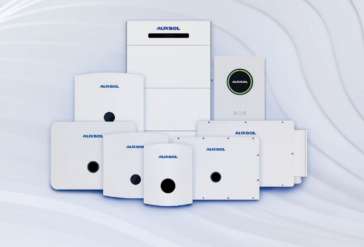Why Connect Your Solar Panel to an Inverter?
Connecting a solar panel to an inverter is a critical step in harnessing solar energy for practical use. Solar panels generate direct current (DC) electricity, but most household appliances and electrical systems rely on alternating current (AC). An inverter bridges this gap by converting DC to AC, enabling seamless integration of solar power into daily life.
Beyond conversion, inverters optimize system performance by monitoring solar output and adjusting to weather conditions. They also act as safety safeguards, detecting faults (such as overvoltage or short circuits) and triggering alerts for maintenance, ensuring long-term efficiency and reliability of your solar investment.
How to Connect Solar Panels to an Inverter?
Follow these steps for safe and effective installation:
Prepare for Installation
1. Assess your energy needs, choose a location with maximum sunlight for panels, and select an inverter size matching your system’s capacity.
2. Check local regulations for permits, and gather tools (e.g., stranded copper wires, wrenches) and safety gear (gloves, goggles).
3. Decide between grid-tied inverters(no batteries needed), hybrid inverters (requires batteries), or off-grid inverters(requires batteries for energy independence) setup.
Install Solar Panels
Mount panels in a sunlit, unshaded area. Connect them in series (positive to negative terminals) for higher voltage or parallel (positive to positive, negative to negative) for higher current. Series works best for long cable runs; parallel is better for uneven shading.
Connect Charge Controller to Battery (if using batteries)
Use a charge controller (e.g., MPPT, common in residential systems) to regulate current and protect the inverter. Connect its positive terminal to the battery’s positive terminal, and negative to negative using stranded copper wire.
Connect Battery to Inverter (if using batteries)
Link the battery’s positive terminal to the inverter’s positive terminal, and the negative to the negative. Refer to the inverter’s manual for specific instructions.
Connect Solar Panels to Charge Controller/Inverter
If using a charge controller, connect panels to it. For direct inverter connection (not recommended, as voltage/current mismatches may damage equipment), ensure strict compatibility with the inverter’s input specs.
AC Wiring
Connect the inverter’s AC output to your home’s electrical panel via a dedicated circuit breaker to prevent overloads. Consult a licensed electrician for safety.
Test the System
Power on the system. If the battery is charged, it should supply energy immediately. If not, wait for sunlight to charge it. Troubleshoot loose connections if the system fails.
Maintenance
Clean panels every 6 months and inspect wiring for damage or corrosion. Ensure no animals chew wires to maintain efficiency.
AUXSOL, a leading solar inverter manufacturer, offers reliable, efficient solutions aligned with "energy saving, environmental protection, high quality, and high efficiency."
Product Range:
1. Inverters: Single/three-phase on-grid inverters (e.g., ASN series) for grid-tied systems; hybrid inverters (e.g., ASG series) combining solar and battery input for off-grid flexibility.
2. Battery Packs: High-voltage (HV) and low-voltage (LV) options (e.g., ABL series) to store excess solar energy.
3. EV Chargers & Meters: Smart EV chargers and meters for integrated energy management.
Advantages:
1. Tailored solutions for residential, commercial and industrial (C&I) use, with inverters compatible with both series and parallel panel configurations.
2. Quality-focused design ensures durability and optimal performance, aligning with system optimization needs like temperature resistance and efficiency stability.
3. Scalable systems to meet growing energy demands, with smart features that complement power optimization and monitoring strategies.
How to Optimize Your Solar Energy System?
1. Choose the Right Inverter: Match the inverter type to your setup.
2. Position Panels Strategically: Face panels south (Northern Hemisphere) or north (Southern Hemisphere) with an 18–36° tilt. Adjust seasonally to maximum sunlight.
3. Monitor and Maintain: Track output, clean panels, and update inverter software. Address shading promptly.
4. Manage Temperature: Ensure panels have airflow to avoid overheating, which reduces efficiency.
FAQ
1. What Is the Maximum Number of Solar Panels I Can Connect to My Inverter?
It depends on the inverter’s maximum input power and the panels’ wattage. Total panel wattage must not exceed the inverter’s capacity.
2. What Is the Optimal Configuration for Connecting Solar Panels?
Series (higher voltage) suits long cables or specific inverters; parallel (higher current) works for uneven shading. A hybrid setup may maximize performance based on location and system specs.
3. What Other Factors Should Be Considered for System Optimization?
Battery Storage: Store excess energy for night use or outages.
Grid Policies: Leverage feed-in tariffs for excess power sent to the grid.
High-Quality Components: Use durable wiring and connectors to minimize energy loss.

